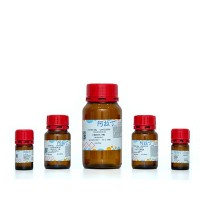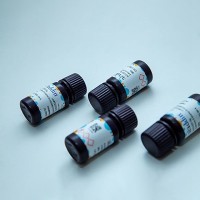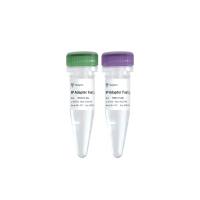In Vivo Footprinting Using UV Light and Ligation-Mediated PCR
互联网
833
The analysis of chromatin structure at single-nucleotide resolution (genomic footprinting) has long been considered technically difficult, at least in mammalian cells. Recently, techniques have been developed that give a sufficient specificity and sensitivity to analyze single-copy genes by genomic footprinting (1 ). The most sensitive method uses ligation-mediated polymerase chain reaction (LMPCR) to amplify all fragments of a genomic sequence ladder (2 ,3 ). LMPCR is based on the ligation of an oligonucleotide linker onto the 5′ end of each DNA molecule that was created by a strand cleavage reaction during the footprinting procedure. This ligation reaction provides a common sequence on all 5′ ends allowing exponential PCR to be used for signal amplification. Thus, by taking advantage of the specificity and sensitivity of PCR, one needs only a microgram of mammalian DNA per lane to obtain good quality DNA sequence ladders, with retention of all information relating to DNA methylation, DNA structure, and protein footprints. The general LMPCR procedure is outlined in Fig. 1 . The first step of the procedure is cleavage of DNA, generating molecules with a 5′-phosphate group. This is achieved, for example, by chemical DNA sequencing (�-elimination), by cutting with an enzyme such as DNaseI, or by converting ultraviolet (UV) photolesions into strand breaks. Next, primer extension of a gene-specific oligonucleotide (primer 1) generates molecules that have a blunt end on one side.









